Labret Piercing: Everything You Need To Know!
Curious about rocking a labret piercing? Explore the different types, jewelry and get wise about the must-knows of this trendy lip piercing.
On Jan 3, 2024 – 6 minutes read
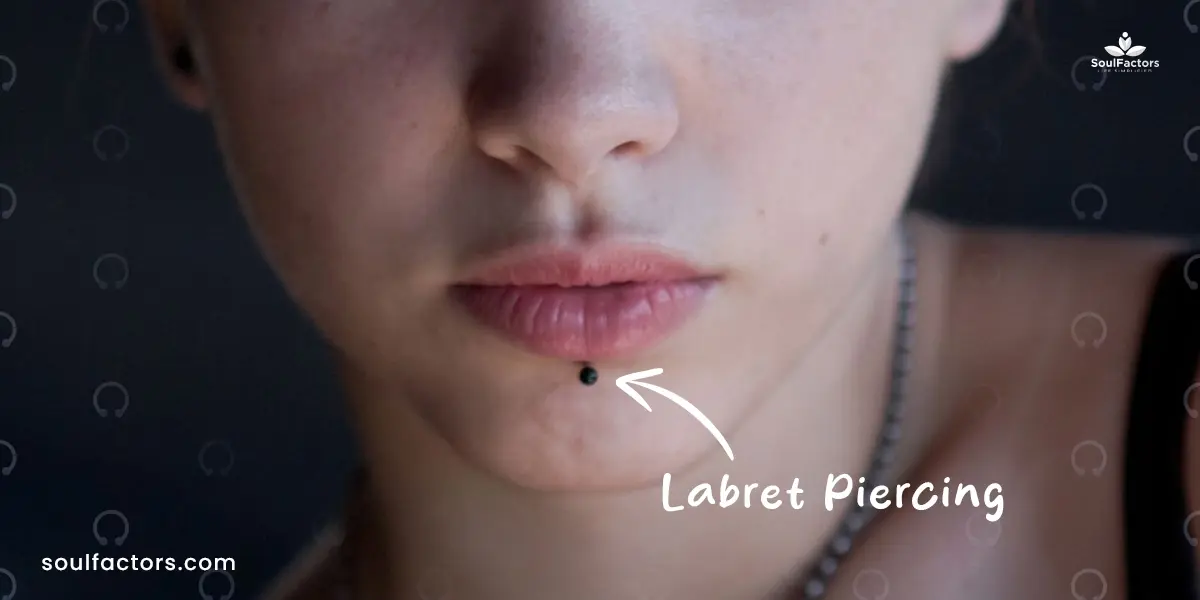
The labret piercing has gained popularity in recent times and lip studs below the lower lip are commonly referred to as labret studs.
While we adore this piercing, as with tongue piercings, gum piercings and frenulum piercings involving sensitive areas, it’s crucial to note that the location of labret as well comes with distinct risks.
What Is A Labret Piercing?
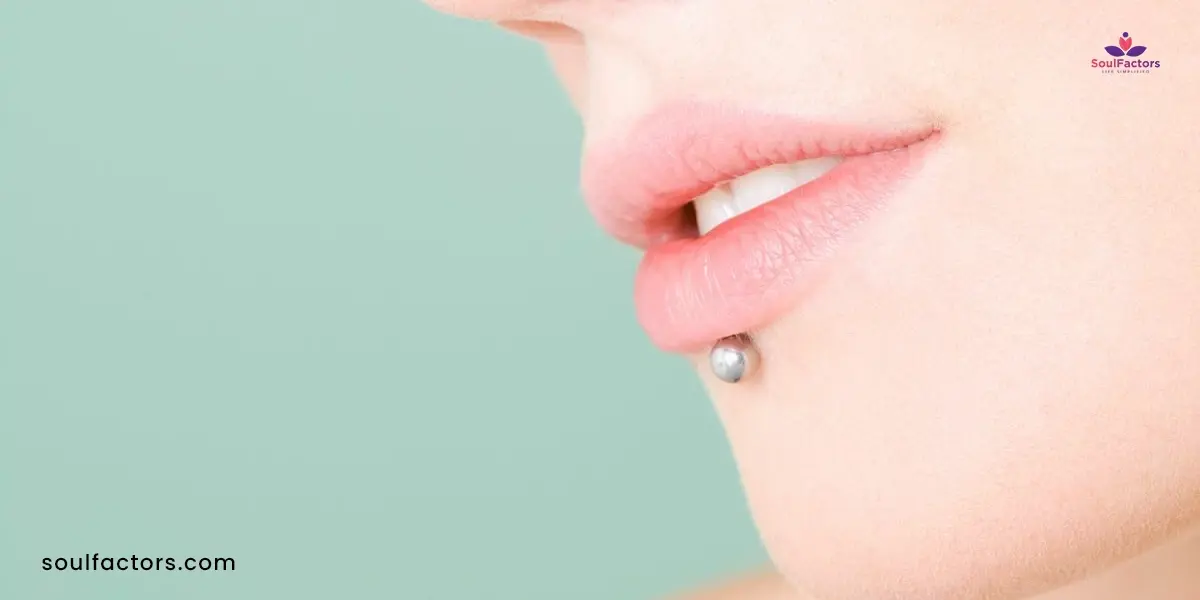
Labret piercing is a facial piercing located below the lower lip, typically centered in the middle, similar to an Ashley piercing on the lower lip. It involves a small stud or hoop inserted through the skin, creating a subtle yet stylish accessory that’s popular for self-expression and personal aesthetics.
Variations Of Labret Piercings
This piercing offers a diverse range of styles to express individuality. The most common variations of labret piercings are vertical labret piercing and side labret piercing.
Vertical Labret Piercing
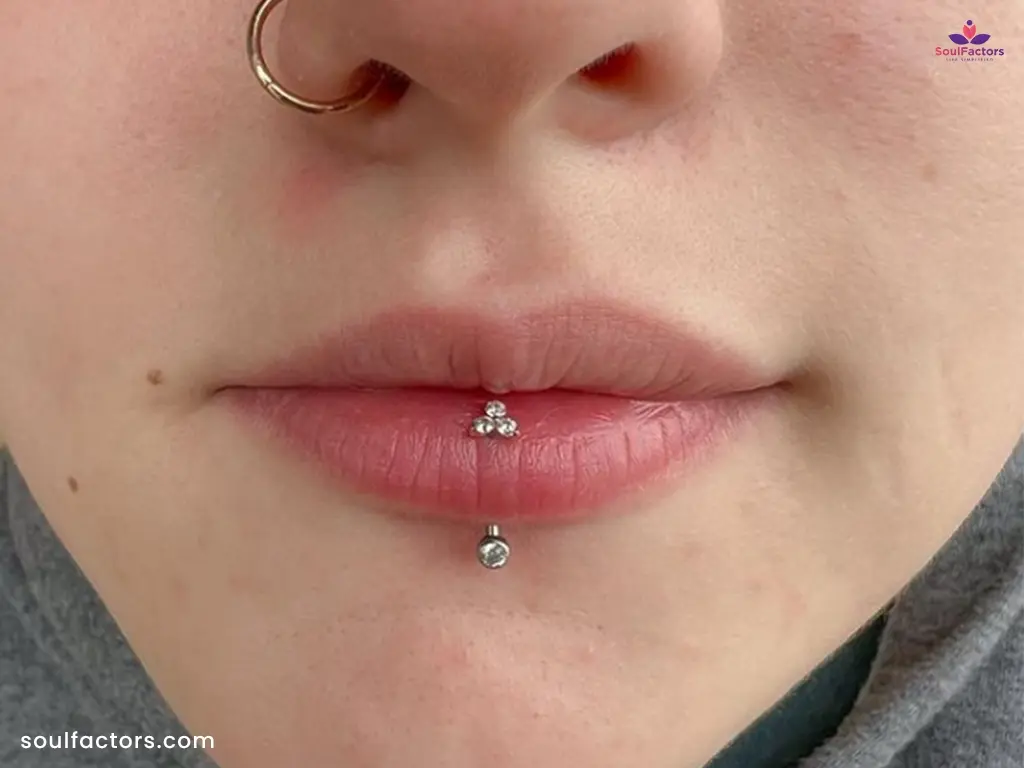
In this piercing one end of the jewelry is visible on the outer surface of the lip, while the other end is inside the mouth.
Side Labret Piercing
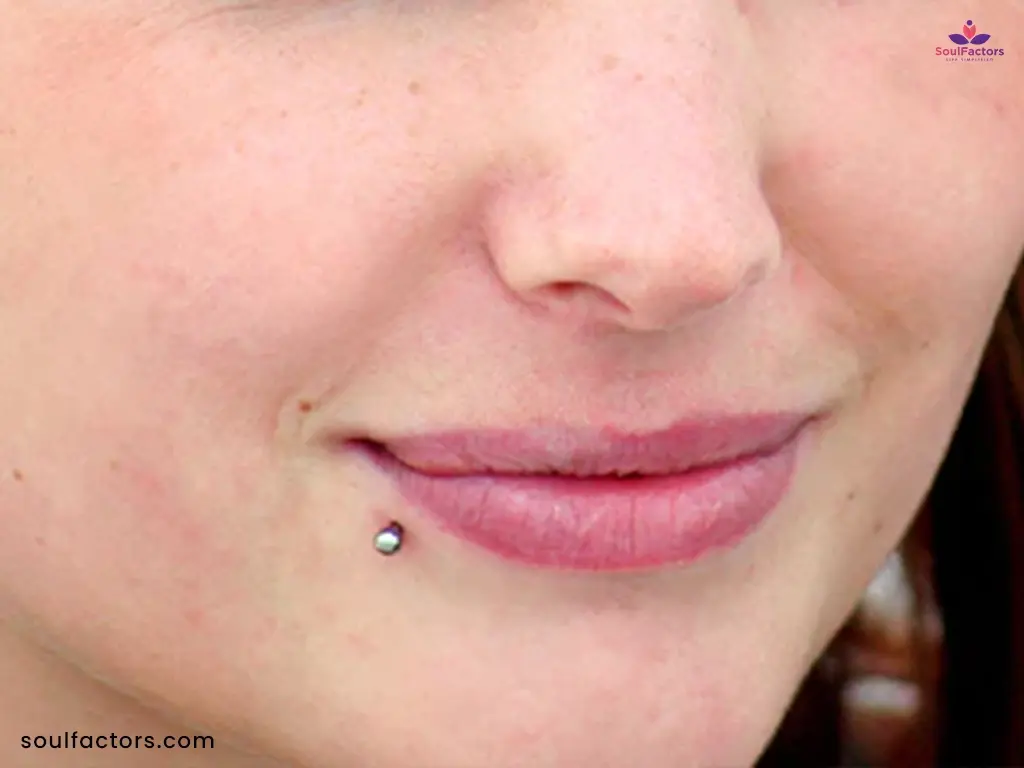
It is an asymmetrical piercing that enters through the lip tissue and exits on one side. Check out spider bite piercing which is a double labret piercing.
Apart from these, the following types are also popular:
Lowbret Piercing
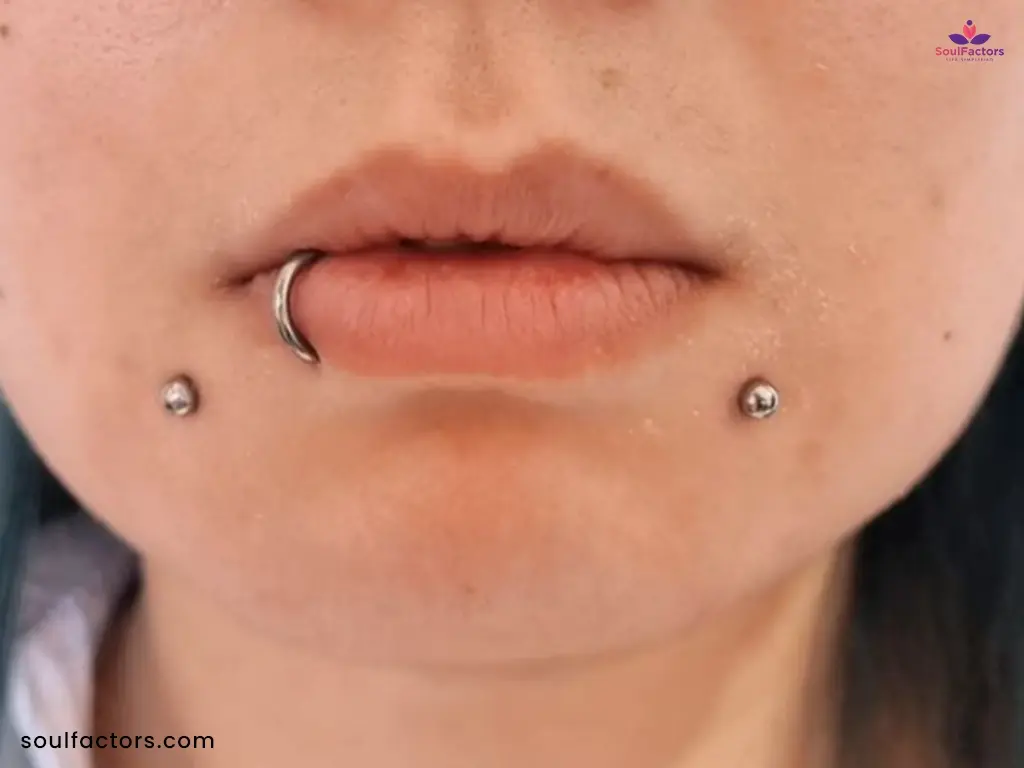
Similar to a traditional labret but placed slightly lower on the bottom lip.
Dolphin Bite Piercing
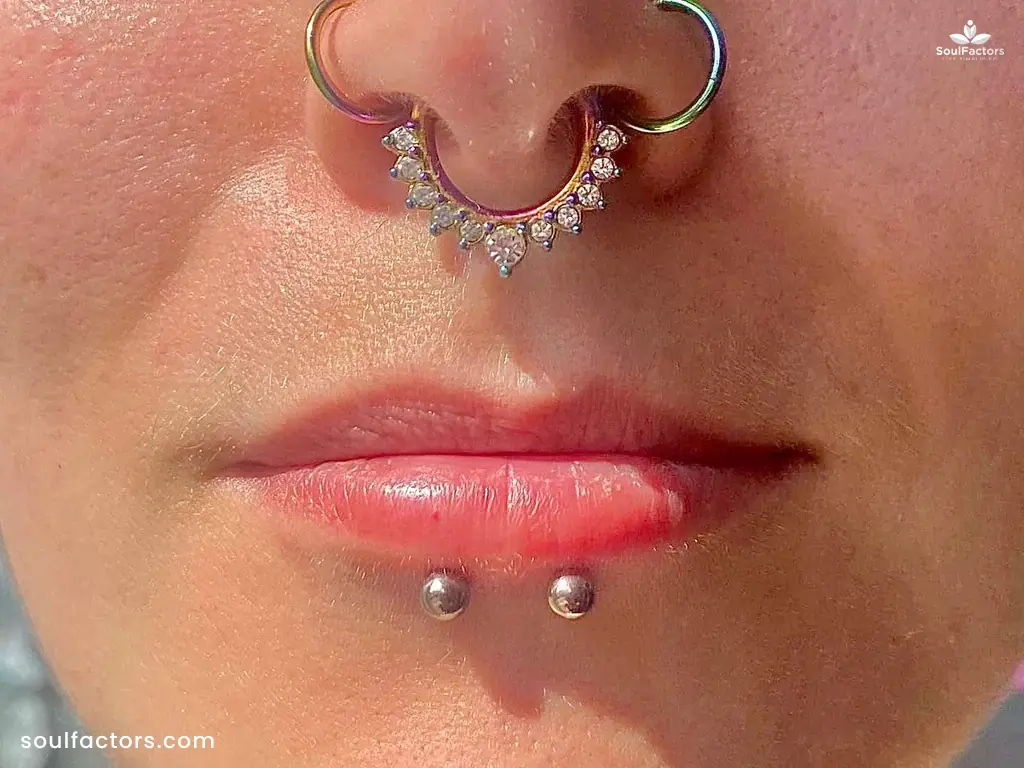
Involves two symmetrical piercings placed close together on the lower lip, resembling a dolphin bite. You may want to compare this with the two-studded snake bite piercing.
Labret Piercing – Procedure
The piercing procedure involves several key steps to ensure a safe and successful piercing. Here’s a general overview of what to expect during a labret piercing:
- Before the procedure, you’ll have a consultation with the piercer.
- The piercer will mark the chosen placement with a pen to guide the piercing process accurately.
- The area around the lower lip will be cleaned with an antiseptic solution to reduce the risk of infection.
- Using a sterilized needle, the piercer will make a single puncture through the predetermined spot below the lower lip.
- The chosen labret jewelry, which can include studs, hoops, or barbells, is carefully inserted into the piercing.
How Painful Is A Labret Piercing?
The pain experienced during a piercing can vary from person to person, as pain tolerance is subjective. Generally, the pain associated with this piercing is considered moderate. The procedure involves a quick puncture through the lower lip, and while the pain is brief, there may be some discomfort afterward as the area may remain sensitive.
How Much Will A Labret Piercing Cost?
The cost can vary based on several factors. On average, you can expect to pay anywhere from $30 to $100 or more.
Labret Jewelry Styles
Labret piercings offer a wide variety of jewelry styles to suit individual preferences and styles. Here are some popular labret jewelry styles:
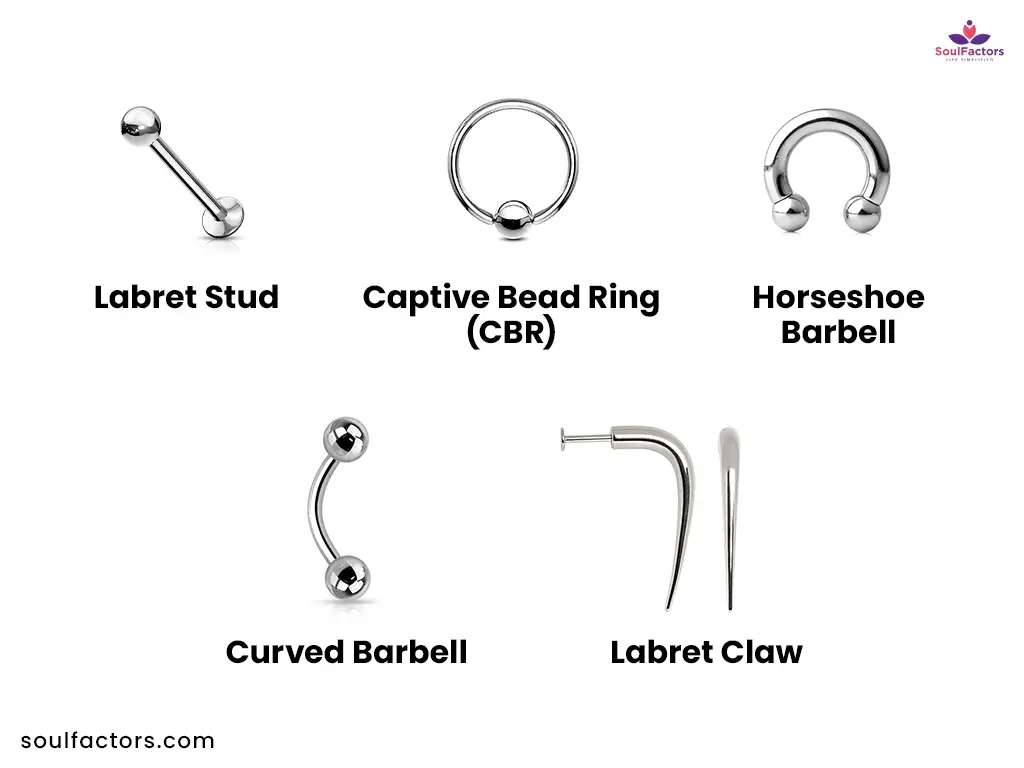
- Labret Stud
- Captive Bead Ring (CBR)
- Horseshoe Barbell
- Curved Barbell
- Labret Claw
How Long Does A Labret Take To Heal?
The healing time for a labret piercing can vary from person to person, but on average, it takes about 6 to 8 weeks for initial healing. However, complete healing, where the piercing is fully stabilized and less prone to irritation or infection, may take several months to a year.
Could Labret Piercing Be Infected?
Yes, a labret piercing can become infected, like any other type of piercing. Infections can occur if bacteria enter the piercing site, often due to improper aftercare, poor hygiene, or exposure to contaminants(1). Here are common signs of a potentially infected piercing:
- Redness and Swelling
- Pain and Tenderness
- Heat around the Piercing
- Pus or Discharge
- Increased Sensitivity
- Red Streaks or Lines
Risks And Complications Associated With Labret Piercings?
These piercings can be aesthetically pleasing, but like any body modification, they come with potential risks and complications. Here are some potential risks and complications associated with labret piercings:
- Infection
- Swelling
- Pain and Discomfort
- Migration and Rejection
- Gum and Tooth Damage
- Allergic Reactions
- Keloids and Scarring
- Speech and Oral Function Changes
How Should You Clean And Care For A New Labret Piercing?
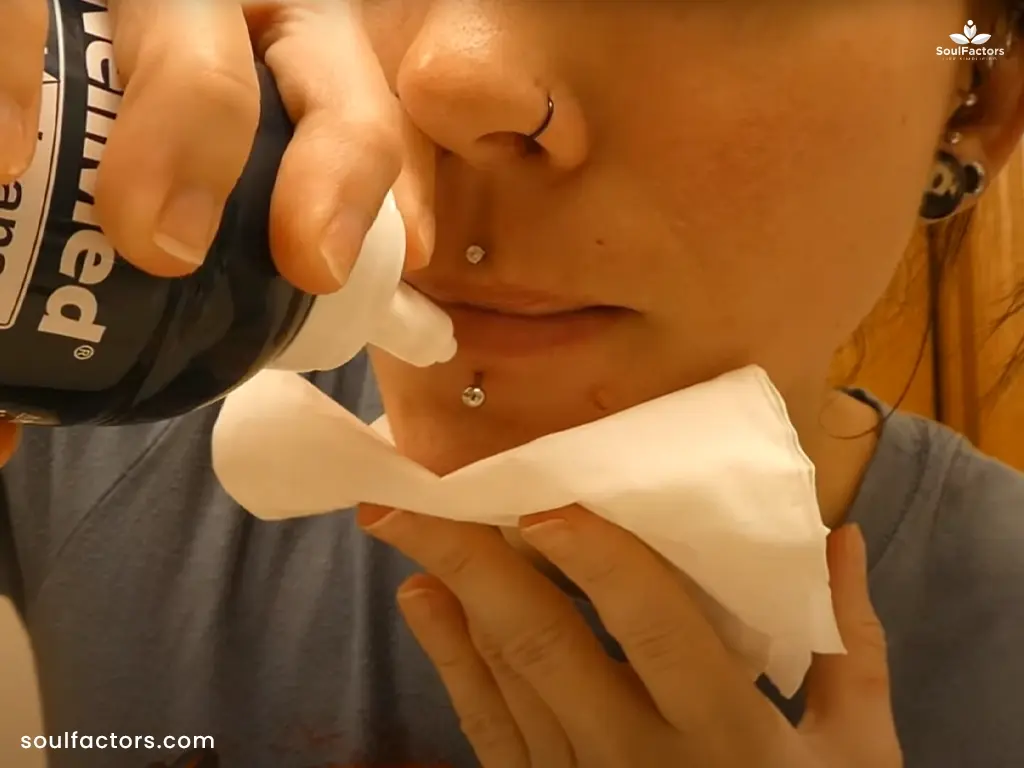
Proper cleaning and care are essential to promote the healing of a new piercing(2) and minimize the risk of complications. Here’s a step-by-step guide:
Cleaning
- Before touching the piercing or jewelry, wash your hands thoroughly with antibacterial soap.
- Mix a saline solution by dissolving non-iodized sea salt in warm distilled water. The ratio is usually 1/4 teaspoon of salt per 8 ounces of water.
- Soak a clean cotton ball or gauze pad in the saline solution.
- Gently apply the soaked cotton ball to the front and back of the piercing, allowing it to soak for a few minutes.
- After saline soaks, rinse the piercing with warm water to remove salt residue.
- Avoid using harsh soaps, hydrogen peroxide, alcohol, or other strong cleaning agents, as they can irritate the piercing and delay the healing process.
Aftercare Tips
- Avoid unnecessary movement or rotation of the jewelry, especially during the initial healing period.
- Be cautious when eating, drinking, or engaging in activities that involve oral contact. Minimize contact with the piercing to reduce the risk of irritation and infection.
- Initially, use high-quality jewelry made from materials like surgical stainless steel or titanium. Avoid jewelry with nickel, as it can cause allergic reactions in some people.
- Choose jewelry with a flat back (labret stud) to reduce irritation on the gums and teeth.
- Look for signs of infection, such as increased redness, swelling, pain, or discharge. If you suspect an infection, consult with a healthcare professional promptly.
- Continue to brush your teeth regularly, but be gentle around the piercing. Use a soft-bristled toothbrush and avoid hitting the jewelry.
- Submerging the piercing in bodies of water, especially those with a higher risk of bacteria (like pools and hot tubs), should be avoided during the initial healing period.
- Be mindful of activities that could result in trauma to the piercing, such as excessive facial expressions, sports that involve face contact, or sleeping on the side of the piercing.
- Listen to and follow the aftercare instructions provided by your piercer. They may have specific recommendations based on your situation.
What Foods And Drinks Do You Need To Avoid While Labret Piercing Heals?
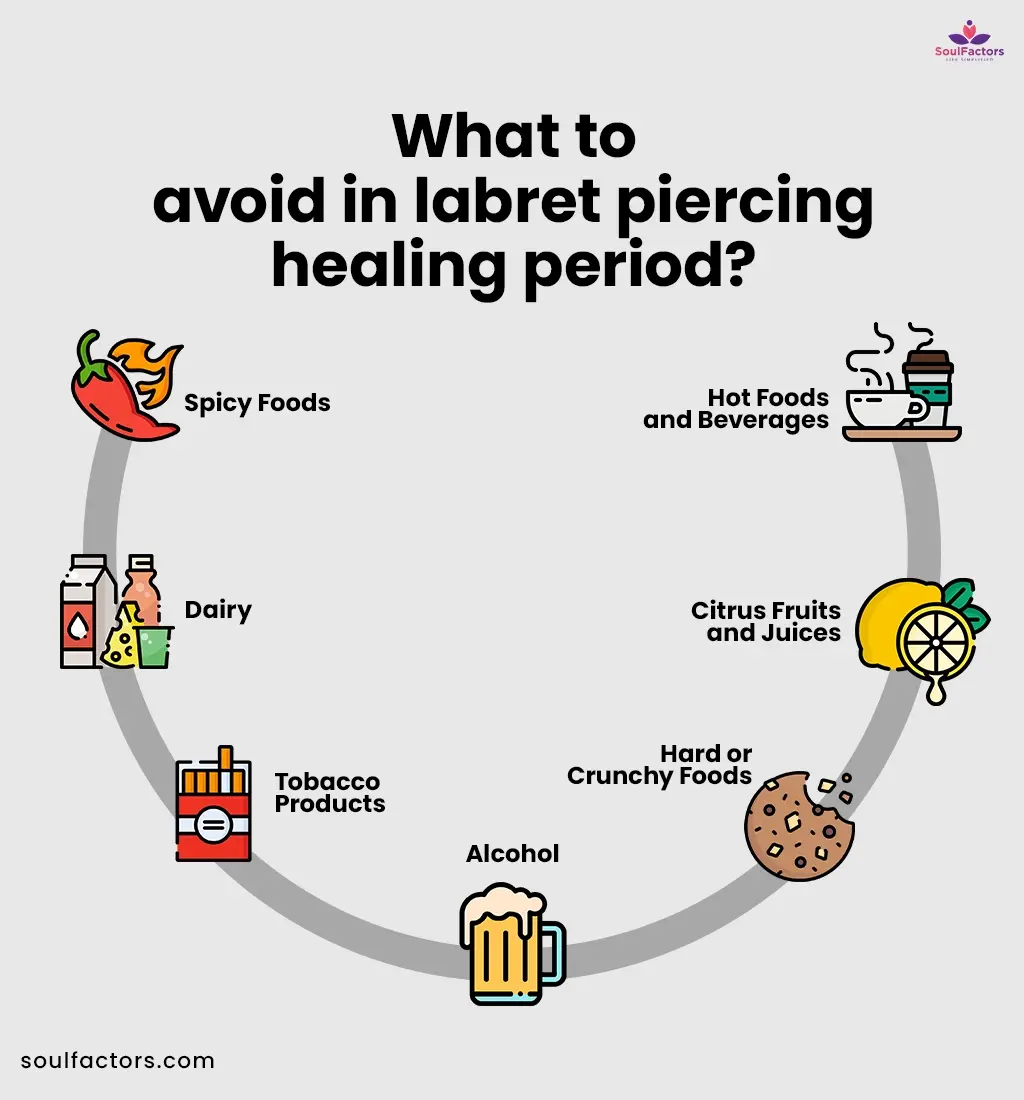
During the healing process of a labret piercing, it’s essential to be mindful of your diet to prevent irritation, reduce the risk of infection, and promote optimal healing.
- Spicy Foods
- Hot Foods and Beverages
- Citrus Fruits and Juices
- Hard or Crunchy Foods
- Alcohol
- Tobacco Products
- Dairy
Frequently Asked Questions
Yes, kissing is possible with this piercing, but be gentle to avoid discomfort or irritation.
A lip piercing is a general term, while a labret specifically refers to a piercing below the lower lip.
Disadvantages may include the potential for gum and tooth damage, swelling, and risk of infection during healing.
These piercings may be rejected in some cases, but proper care and choosing quality jewelry reduce the risk.
Yes, you can wear lipstick, but choose products carefully to avoid irritation.
A well-placed labret piercing should not touch your teeth; proper jewelry size and style help prevent contact.
This piercing does not inherently make lips look bigger; the visual effect depends on personal aesthetics.
Wrapping Up
If you are into piercing then you might be inclined towards labret piercing. After all, it’s not just a piercing; it’s a statement, a personal mark that sets you apart with flair. But keep in mind the potential risks associated with it and if you go for it, just make sure to show it some love with the right aftercare!

Subscribe to Newsletter
Elevate your routine, stay on trend, and embrace a personalized beauty journey with our curated insights.


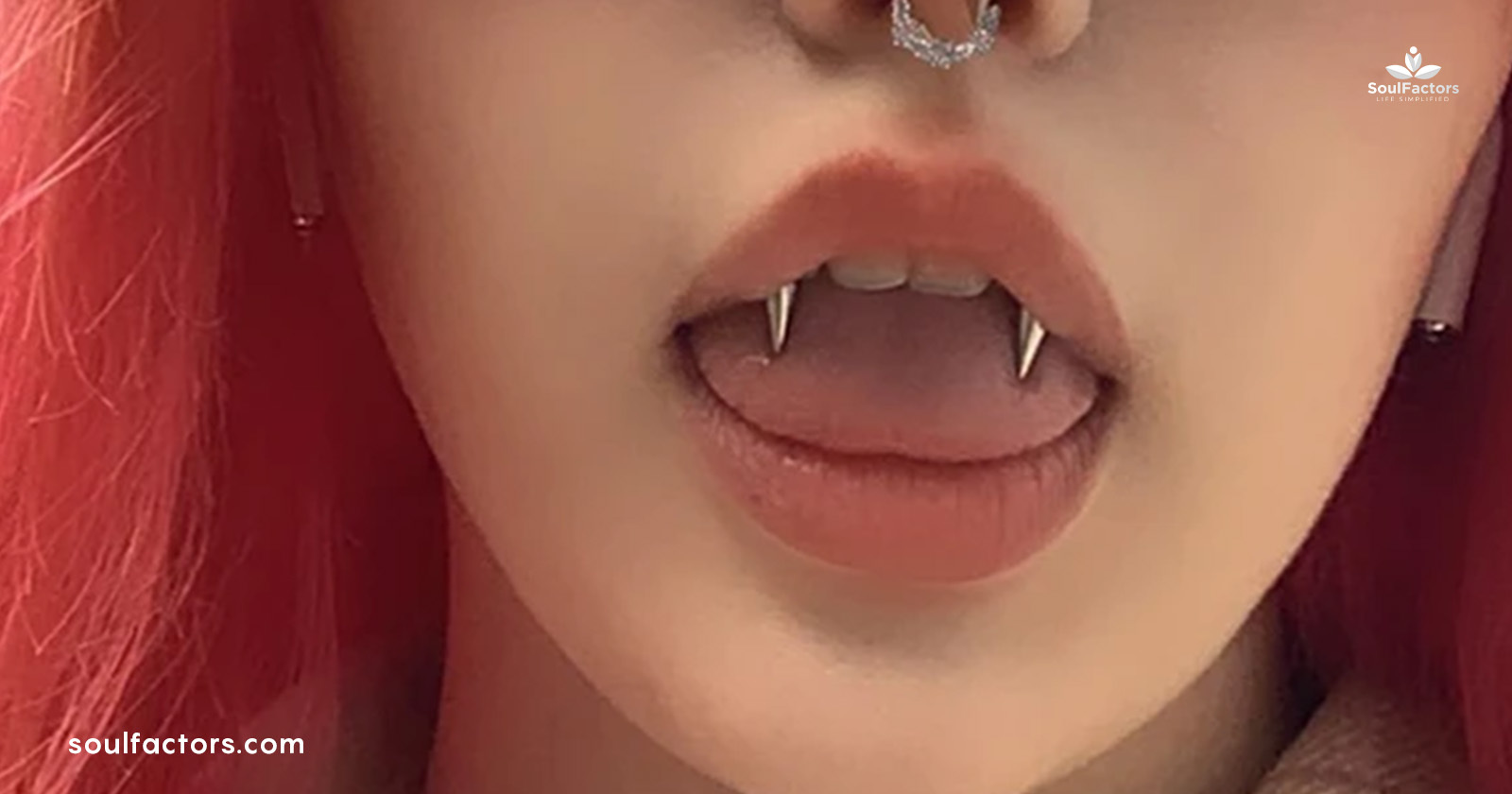
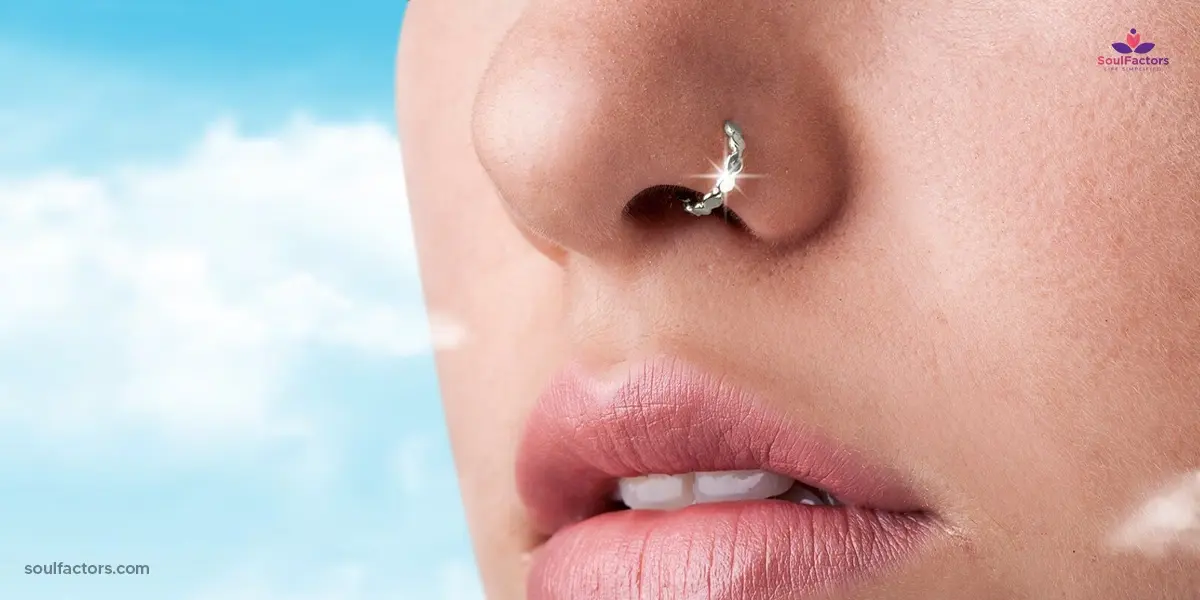
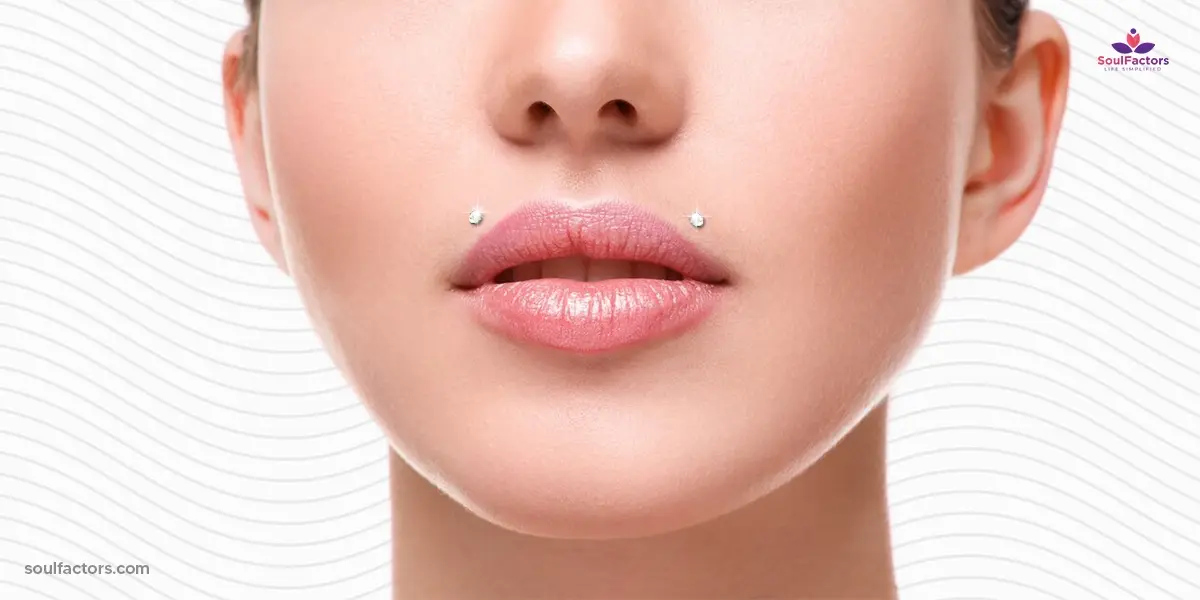
Write a Comment